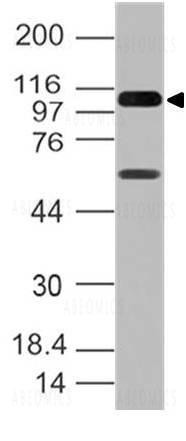Cookie preferences
This website uses cookies, which are necessary for the technical operation of the website and are always set. Other cookies, which increase the comfort when using this website, are used for direct advertising or to facilitate interaction with other websites and social networks, are only set with your consent.
Configuration
Technically required
These cookies are necessary for the basic functions of the shop.
"Allow all cookies" cookie
"Decline all cookies" cookie
CSRF token
Cookie preferences
Currency change
Customer-specific caching
FACT-Finder tracking
Individual prices
Selected shop
Session
Comfort functions
These cookies are used to make the shopping experience even more appealing, for example for the recognition of the visitor.
Note
Show the facebook fanpage in the right blod sidebar
Statistics & Tracking
Affiliate program
Conversion and usertracking via Google Tag Manager
Track device being used

| Item number | Size | Datasheet | Manual | SDS | Delivery time | Quantity | Price |
|---|---|---|---|---|---|---|---|
| ABE-10-4121-25 | 25 µg | - |
3 - 11 business days* |
149.00€
|
If you have any questions, please use our Contact Form.
You can also order by e-mail: info@biomol.com
Larger quantity required? Request bulk
You can also order by e-mail: info@biomol.com
Larger quantity required? Request bulk
RIG-I (retinoic-acid-inducible gene I), also known as DDX58 (DEAD (Asp-Glu-Ala-Asp) box... more
Product information "Anti-RIG-I (Clone: ABM4H29)"
RIG-I (retinoic-acid-inducible gene I), also known as DDX58 (DEAD (Asp-Glu-Ala-Asp) box polypeptide 58) is a 925-residue cytoplasmic viral RNA receptor, critically involved in the activation of the innate immune response to RNA virus infection. It is a member of the RIG-I-like receptor (RLR) family and is an essential intracellular sensor for several 5-triphosphorylated RNA viruses. RIG-I elicits its antiviral interferon (IFN) responses by recognizing viral double-stranded RNAs (dsRNAs). Structurally it comprises a helicase domain, a C-terminal domain, and N-terminal CARDs (caspase activation recruitment domains) involved in activating MAVS (mitochondrial antiviral signaling protein). Upon binding of 5'-triphosphorylated RNA, RIG-I undergoes conformational changes and post-translational modifications that allow multimerization and interaction with the mitochondrial antiviral signaling protein (MAVS). Protein function: Innate immune receptor which acts as a cytoplasmic sensor of viral nucleic acids and plays a major role in sensing viral infection and in the activation of a cascade of antiviral responses including the induction of type I interferons and proinflammatory cytokines. Its ligands include: 5'- triphosphorylated ssRNA and dsRNA and short dsRNA (<1 kb in length). In addition to the 5'-triphosphate moiety, blunt-end base pairing at the 5'-end of the RNA is very essential. Overhangs at the non-triphosphorylated end of the dsRNA RNA have no major impact on its activity. A 3'overhang at the 5'triphosphate end decreases and any 5'overhang at the 5' triphosphate end abolishes its activity. Upon ligand binding it associates with mitochondria antiviral signaling protein (MAVS/IPS1) which activates the IKK- related kinases: TBK1 and IKBKE which phosphorylate interferon regulatory factors: IRF3 and IRF7 which in turn activate transcription of antiviral immunological genes, including interferons (IFNs), IFN-alpha and IFN-beta. Detects both positive and negative strand RNA viruses including members of the families Paramyxoviridae: Human respiratory syncytial virus and measles virus (MeV), Rhabdoviridae: vesicular stomatitis virus (VSV), Orthomyxoviridae: influenza A and B virus, Flaviviridae: Japanese encephalitis virus (JEV), hepatitis C virus (HCV), dengue virus (DENV) and west Nile virus (WNV). It also detects rotavirus and reovirus. Also involved in antiviral signaling in response to viruses containing a dsDNA genome such as Epstein-Barr virus (EBV). Detects dsRNA produced from non-self dsDNA by RNA polymerase III, such as Epstein-Barr virus-encoded RNAs (EBERs). May play important roles in granulocyte production and differentiation, bacterial phagocytosis and in the regulation of cell migration. [The UniProt Consortium]
| Keywords: | Anti-RLR-1, Anti-RIG-1, Anti-RIG-I, Anti-DDX58, EC=3.6.4.13, Anti-DEAD box protein 58, Anti-RIG-I-like receptor 1, Anti-Retinoic acid-inducible gene I protein, Anti-Retinoic acid-inducible gene 1 protein, Anti-Probable ATP-dependent RNA helicase DDX58, Mo |
| Supplier: | Abeomics |
| Supplier-Nr: | 10-4121-25 |
Properties
| Application: | IHC, FC, WB |
| Antibody Type: | Monoclonal |
| Clone: | ABM4H29 |
| Conjugate: | No |
| Host: | Mouse |
| Species reactivity: | human |
| Immunogen: | A partial length recombinant human RIG-I protein (amino acids 1-220) was used as the immunogen for this antibody. |
| Format: | Purified |
Database Information
| KEGG ID : | K12646 | Matching products |
| UniProt ID : | O95786 | Matching products |
| Gene ID | GeneID 23586 | Matching products |
Handling & Safety
| Storage: | +4°C |
| Shipping: | +4°C (International: +4°C) |
Caution
Our products are for laboratory research use only: Not for administration to humans!
Our products are for laboratory research use only: Not for administration to humans!
Information about the product reference will follow.
more
You will get a certificate here
Viewed







